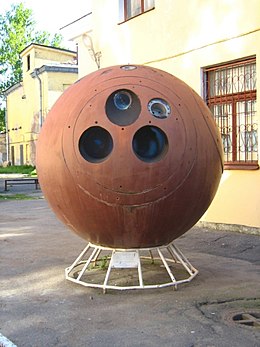|
Kosmos 10
Kosmos 10 (Russian: Космос 10 meaning Cosmos 10), also known as Zenit-2 No.6, was a Soviet reconnaissance satellite launched in 1962. It was the tenth satellite to be designated under the Kosmos system, and the fourth successful launch of a Soviet reconnaissance satellite, following Kosmos 4, Kosmos 7 and Kosmos 9.[3] SpacecraftKosmos 10 was a Zenit-2 satellite, a first generation, low resolution, reconnaissance satellite derived from the Vostok spacecraft used for crewed flights, the satellites were developed by OKB-1. In addition to reconnaissance, it was also used for research into radiation in support of the Vostok programme. It had a mass of 4,610 kilograms (10,160 lb).[1] MissionThe Vostok-2, s/n T15000-03, was used to launch Kosmos 10.[4] The launch was conducted from Site 1/5 at the Baikonur Cosmodrome, and occurred at 09:21 GMT on 21 October 1962.[5] Kosmos 10 was placed into a low Earth orbit with a perigee of 197 kilometres (122 mi), an apogee of 367 kilometres (228 mi), an inclination of 65.0°, and an orbital period of 90.2 minutes.[2] It conducted a four-day mission, before being deorbited and landing by parachute on 21 October 1962, and recovered by the Soviet forces in the steppe in Kazakhstan.[6] It was the last four-day test flight of the Zenit-2 programme, before the system became fully operational and began making eight-day full-duration flights from the next mission, Kosmos 12.[3] See alsoReferences
|
||||||||||||||||||||||||||||||||||||||||||||||||||||||||||||||||||||||
